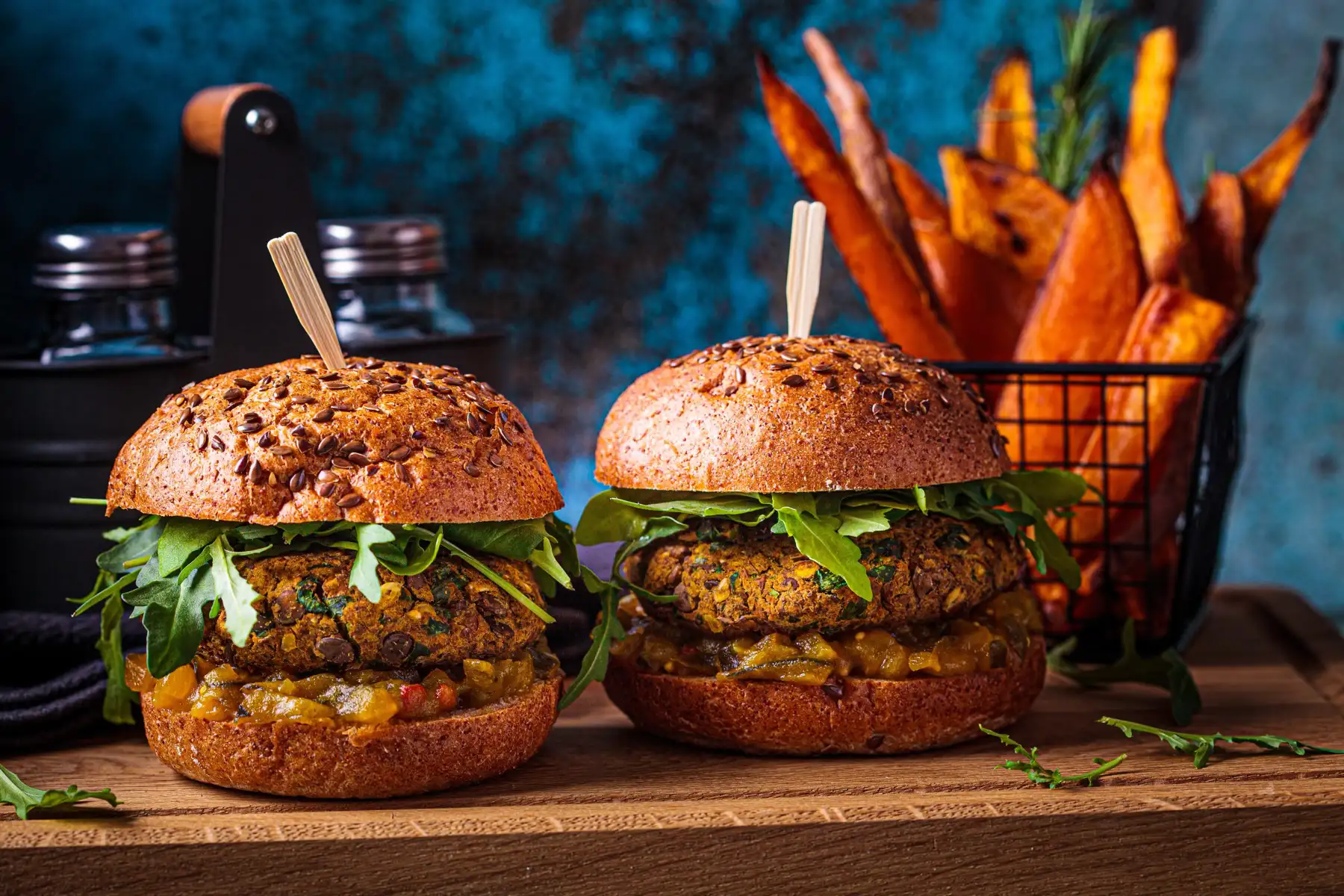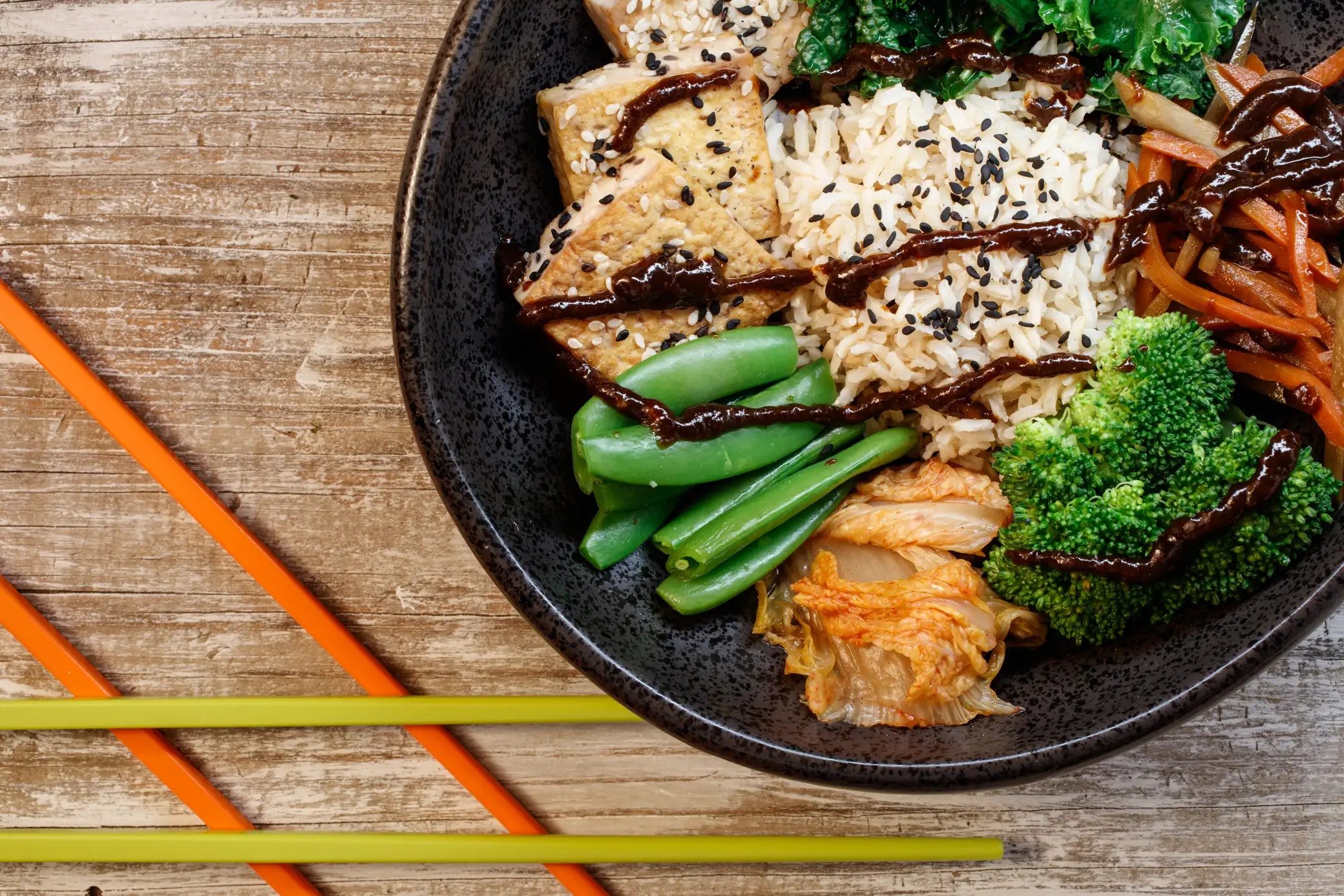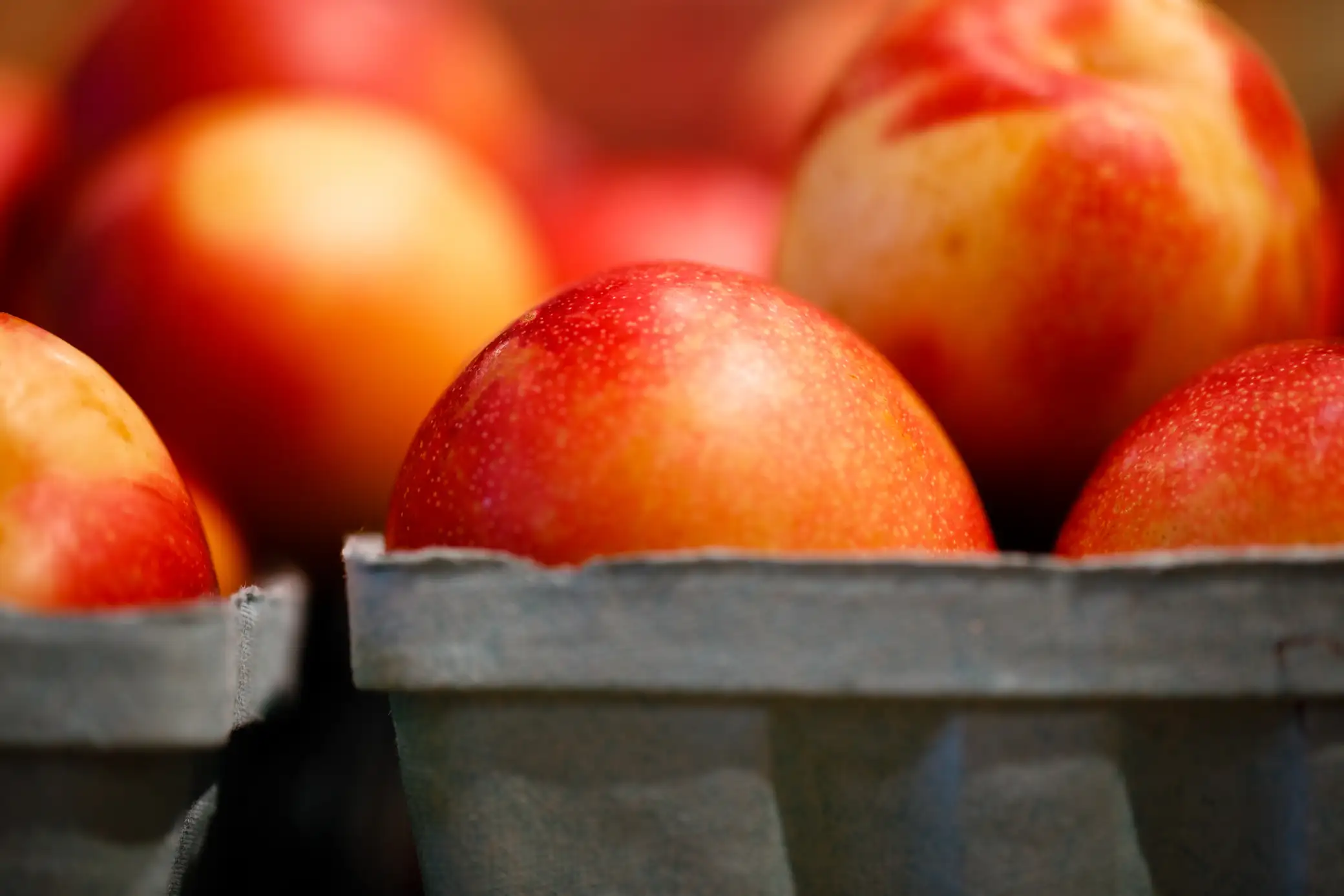There is a way, and all it takes is a little understanding of the calorie density of various foods and how to construct your plate.
What is Calorie Density? Calorie Density is the number of calories per pound (lb) of food.
Vegetables and most fruits are the lowest in calorie density (only 100-300 calories per lb, the most nutrient-dense)
Whole grains, legumes (beans), and starchy vegetables (potatoes, yams, hard squashes) are more calorie dense than vegetables and fruit but high in nutrients and fiber and still low in calories (300-600 calories per pound)
Nuts, seeds, *processed foods, meat, poultry, eggs, dairy products, oils, and avocados (750/lb) are the most calorie dense (1,200 *and more* calories per pound).
Examples:
Broccoli is 100 calories per pound
Brown rice or potatoes are about 400 calories per pound
Whole grains and pasta are about 500 calories per pound
Beans and legumes are about 600 calories per pound
These foods are loaded with nutrients and fiber and contain more water creating bulk in your stomach making you feel full and satiated.
The foods 1,200 to 4,000 calories per pound are bread, butter, cheese, ice cream, nuts, seeds, processed foods like snacks (crackers, candy, chips), and oils. Mostly, they do not contain fiber, water, and bulk and therefore require more significant portions to feel full. Because they don’t provide bulk, they are easy to overeat.
Oil is 4,000 calories per pound, so limiting or avoiding it will cut way back on your caloric intake. Opt for water or broth sauteed, baked, steamed, roasted with seasonings and broth, no oil salad dressings, and sauces without oil (or very low, not in the first 3 – 4 ingredients).
What does this mean? To feel full and satiated without restriction or feelings of deprivation, you can reconfigure your plate. Leaning on the lower calorie-dense foods to fill you up and help crowd out the higher calorie-dense foods so you can still enjoy the flavors without loading up on the calories. Your new and improved plate:
Half raw or cooked vegetables – full of water and fiber, provide bulk
The other half is mostly grains, beans, and starchy vegetables – loaded with fiber and nutrients, more bulk will help you feel full
Smallest portion – Nuts, seeds, and avocado in smaller portions (i.e., on oatmeal or in a salad) as garnish – provides healthy fats. If you include meat, fish, poultry, dairy, or processed foods, have them in the smallest portions, as garnishes and flavoring, if at all (these foods are optional). You will enjoy it even more with seasonings and sauces on your plate.
Sample dish at home:
Example: Brown rice penne with 365 fat-free marinara, broccoli and homemade seitan sausage like this easy recipe or sliced Beyond Hot Italian sausage (the sausage is for flavoring and much better than pork, beef and turkey sausages as it is lower in fat and high in protein).
Sample dish eating out:
Chipotle or Freebird’s burrito: vegan bowl or a burrito with brown rice, whole beans, vegan sofritos, corn salsa, fresh tomato salsa, fajita veggies, romaine lettuce, guacamole or avocado and tomatillo red or green chili salsa.
IMPORTANT TIPS:
Whenever possible, ADD! The goal is to crowd out the higher calorie dense foods with the lower ones. This is how we avoid deprivation.
Bulk up your pasta marinara, pizza, burrito, taco, or stir fry with extra veggies.
Dilute your noodle and stir fry dishes by tossing in some steamed vegetables.
Oftentimes by adding vegetables to bulk up your dish, you can get two meals from it!
Look at the plant-based ingredients in other menu dishes and sides (if they serve beans, ask to add them to your dish or salad, if they serve broccoli, ask to add it to your pasta, etc.).
Request no oil or easy on the oil (especially at Asian cafes where stir fries are more common). Most places are happy to do this.
Choose steamed over fried and stir-fried, but with the seasonings from the original version.
Potatoes and yams, choose baked over fried, load up with condiments and use it to crowd out the more calorie dense items on your plate.
Sauce and dressing on the side. Use less, aim for oil-free, or replace with vinegar, lemon, or lime instead. And ask to add fresh herbs for more flavor.
Hold the cheese, mayo, and butter! Sub avocado (think sandwiches, toast, tacos, burritos).
All it takes is a little practice and eventually will become second nature. One step at a time, one meal at a time.
Whatever you do, don’t get overwhelmed! Start by just ADDing lower calorie dense foods to your plate and meals (vegetables) and go from there. Enjoy the food, and enjoy the journey.
*Note:
*Processed Foods = foods that are no longer in their original form as found in nature, are packaged and can live on a shelf for a long time without spoiling.
Can be healthy, for example whole grain bread made from wheat berries, or corn tortillas made from only corn (and maybe lime and salt). Whole grain bread is processed and more calorie dense than wheat berries (the whole food), but still contains fiber and nutrients and is more satiating. Look for the words Whole, Stone Ground, or Sprouted as the first ingredient of your bread (wheat, spelt, oat, etc.).
Can be unhealthy: pretzels possibly made from wheat berries, but the grain has been ground, stripped of fiber, bleached and enriched with chemical additives and often high amounts of salt, oil and sugar. They are high in calorie density, contain little to no nutrients and fiber, are not satiating, and easy to overeat.





